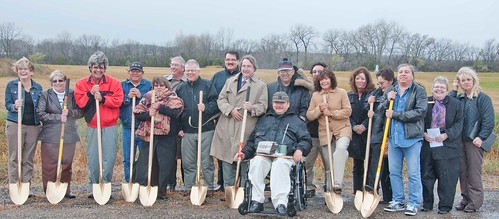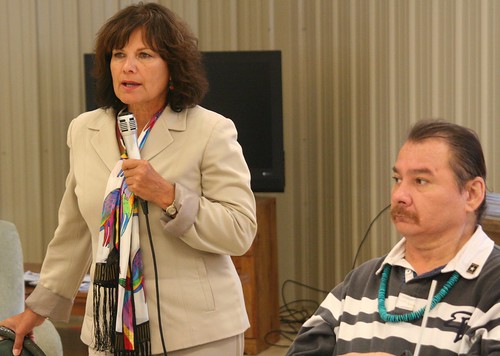
In the mid-1970’s, the Sisseton Wahpeton Oyate (Sioux Tribe) relocated from a small tribal office building in Sisseton, SD, to establish a new tribal government at the Old Agency Dakota community in Agency Village, SD. Since then, the tribe has grown immensely in population and in services provided to tribal members, who presently have to travel long distances in order to get needed services from tribal programs at various locations throughout northeastern South Dakota. Today, the vision of providing needed services to its members in one central location is soon to become a reality, thus fulfilling the dream of decades ago with the move to Agency Village.
A ground breaking ceremony for the construction of a new administration building made possible through a USDA Rural Development Community Facilities Direct Loan in the amount of $31,200,000 was held on October 26, 2010.
According to South Dakota Rural Development State Director Elsie M. Meeks, this project will bring savings for rent/utilities to the Sisseton Wahpeton Oyate, create many efficiencies, along with providing economic sustainability.
The Sisseton Wahpeton Oyate is a federally recognized Indian Tribe located on the Lake Traverse Reservation in northeastern South Dakota and southeastern North Dakota, primarily in Roberts County. The new facility at Agency Village will serve 6,526 members of the total 12,780 reservation members. The current buildings that house services offered on the reservation are beyond their economically life and the current scatter system of facilities is not sustainable. The proposed facility will create one location for all tribal service offices to be available to assist tribal members with social, educational, housing and other needs under one roof.
Michael Selvage, Tribal Chairman for the Sisseton Wahpeton Oyate went on to say that the new administration building will be the home for tribal children far into the future as it will be constructed to last for 100 years. Those of us here today will be long gone by then.
This project is the largest community facility loan made in the history of South Dakota USDA Rural Development. The proposal is to replace 26 individual office sites into one single service center location and has tremendous tribal support and provides a cost savings to the tribe. The building will actually pay for itself because of the energy efficiencies that will be created in the design.
November is Native American and Alaska Native Heritage Month. To find out more about USDA’s consultation with the Tribes click here (PDF, 323 KB).


